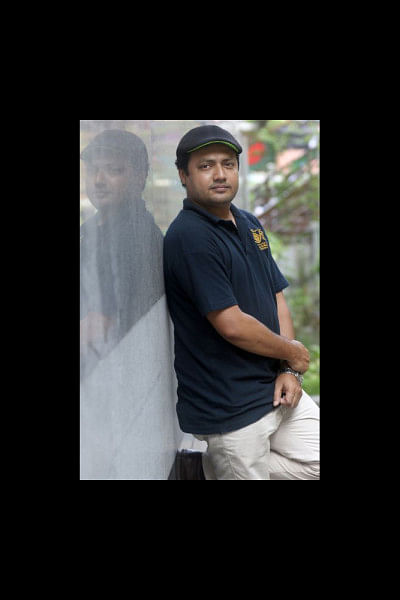Visual Storytelling

The title 'photojournalist' or 'photographer' can barely describe Din Muhammad Shibly's versatile activism with his camera. His vast journalistic research and photography work on climate change and mentoring programmes at one of Bangladesh's leading photography institute, Counter Foto, has made him an icon in environmental and media activism. A graduate of Mass Communication and Journalism from Rajshahi University, Shibly's journey as a documentary photographer and freelance photojournalist started in 2003.
The turning point in Shibly's life came when renowned photographer Peter Essick from National Geographic Channel visited Bangladesh to cover the impact of climate change, and Shibly got the chance to work with him. "At that time I used to take random photos of every element related to climate change such as rivers or oceans or affected communities," he says.
"However, it was the beginning of my thirty years long project called Time/Life to portray the impact of climate change in Bangladesh," he adds. After the devastating flood of 2007, Shibly took Time/Life as the flagship project of his documentary-photography career.
Shibly says, "I have travelled to the distant islands of Bhola and also to remote northern districts, like Kurigram to experience the actual effect of climate change on Bangladeshi people's livelihood."
Shibly has been working relentlessly on this project for 12 years and has arranged 4 exhibitions with his works. His first exhibition called Time/Life- 1 was arranged in Rajshahi University and the second one was arranged in Chittagong. However, the third exhibition was something very special for Shibly. "I became very happy when I was allowed to arrange my exhibition at the conference hall of Nansen Initiative on climate change, disasters and human mobility in South Asia and the Indian Ocean region," he says. "Many global policy makers were present at the conference in Khulna and they experienced the sufferings of our people through my works."
Shibly did not go for international recognition or awards. "What I want to do is to draw the attention of leaders and policy makers through my works so that they can realise the plight of the affected people," he says.
The latest exhibition has brought Shibly nearer to his goal. The fourth exhibition of Time/Life has been arranged at the gallery of Ministry of Foreign Affairs, Bangladesh, where his works on Bangladeshi climate affected communities have drawn the attention of national and international policy makers.
Shibly says, "I have spent 12 years on this project and I will continue to work for another 18 years. My mission is to show the world what is actually happening to those affected by climate change. Sometimes I wish I could cover all the billboards of the main avenues of Dhaka city with these photographs."
Shibly has also been working as the head of academics of Counter Foto and through his mentoring programme at the institute, has been developing batches of skilled photographers and researchers who will be working on the impact of climate change in Bangladesh.

 For all latest news, follow The Daily Star's Google News channel.
For all latest news, follow The Daily Star's Google News channel. 



Comments